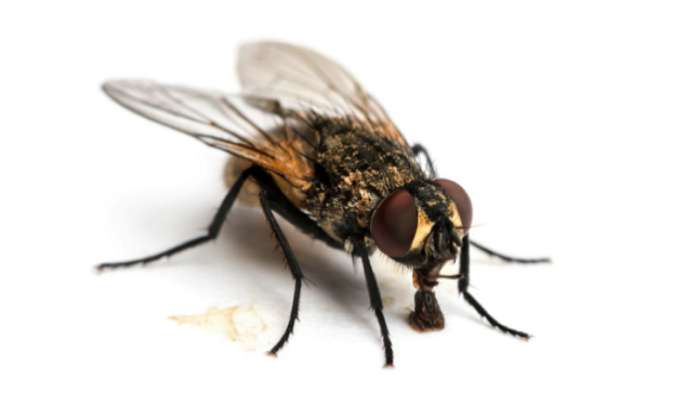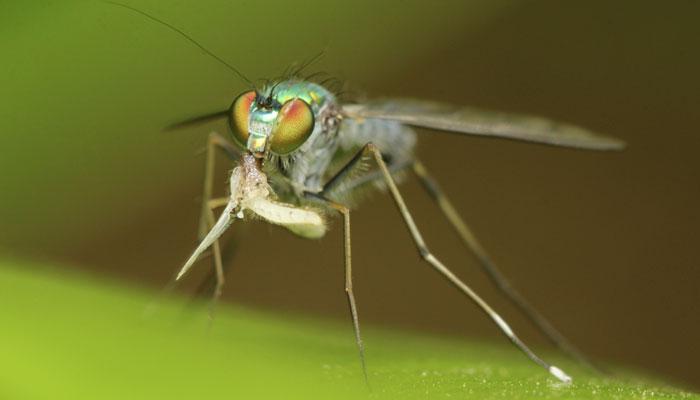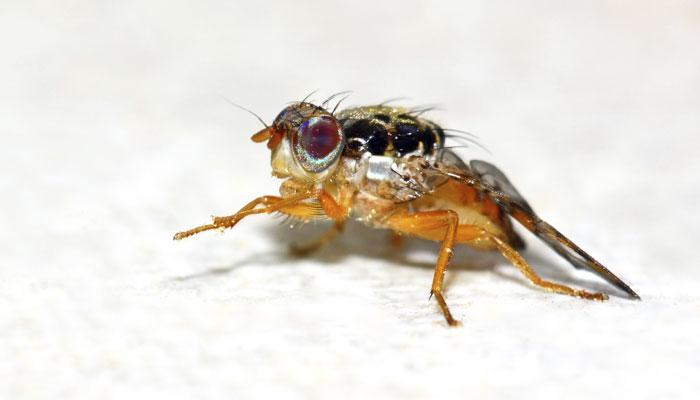
Non-biting flies, such as houseflies, are not only nuisance pests, but they are also responsible for transmitting diseases and contaminating food. For instance, house flies are capable of contaminating food and transferring more than 100 pathogens, including malaria, salmonella and tuberculosis. Food contamination is one of the main reasons that fly pest control is so important.
Fruit Flies
Fruit flies get their common name from their small size and fondness of some fruits. Small fruit flies are nuisance pests, but may act as disease vectors.
Fruit flies are especially attracted to ripened fruits and vegetables in the kitchen. But they also will breed in drains, garbage disposals, empty bottles and cans, trash containers, mops and cleaning rags. All that is needed for development is a moist film of fermenting material. Infestations can originate from over-ripened fruits or vegetables that were previously infested and brought into the home. The adults can also fly in from outside through inadequately screened windows and doors. However, they also have the potential to contaminate food with bacteria and other disease-producing organisms.
Horse Flies
Horse flies likely received their common name because they are notorious pests of horses and other mammals. They are commonly found in both suburban and rural areas near bodies of water, which serve as breeding sites, and where mammal hosts are most abundant.
House Flies

House flies get their name from being the most common fly found around homes. Adult house flies can grow to one-quarter of an inch long and usually live between 15 and 25 days. Diseases carried by house flies include typhoid, cholera, salmonella, anthrax, tuberculosis and dysentery. House flies have also been known to transmit the eggs of parasitic worms.



